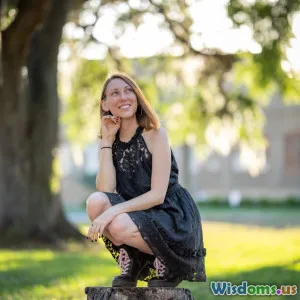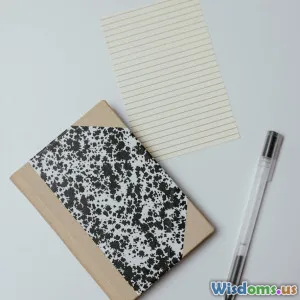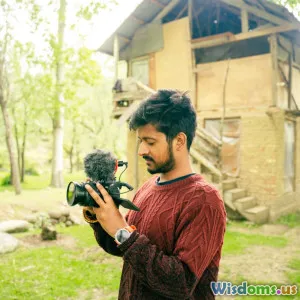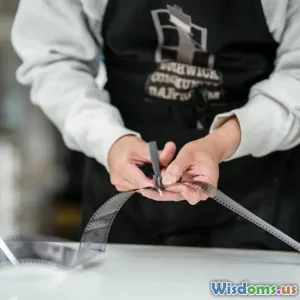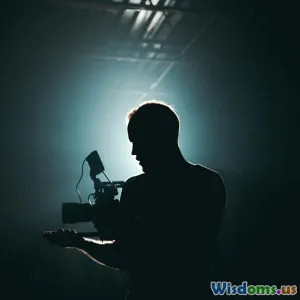
The Art of Editing in Modern Filmmaking
7 min read Explore how editing shapes modern filmmaking, from storytelling techniques to technological innovations. (0 Reviews)
The Art of Editing in Modern Filmmaking
In the rapidly evolving world of cinema, editing stands as the invisible craft that breathes life into raw footage, molding disparate shots into compelling stories that resonate. While audiences often praise directing or acting, it's the editing room where films truly find their pace, tone, and rhythm. But what makes editing an art, especially in the context of modern filmmaking? This article embarks on a deep dive into the multifaceted role of editing, revealing how it intertwines with creativity, technology, and storytelling with real-world examples and insights.
Understanding Editing as Storytelling
The Editor’s Narrative Palette
Editing is much more than cutting clips together; it is a language through which a story is told. Renowned editor Walter Murch, who worked on Apocalypse Now and The Godfather, famously said students should study editing as "the first step in learning how to manipulate the emotions of the audience." Using montage techniques, pace alterations, and selective shot inclusion, editors influence how viewers perceive time, space, and character emotions.
For example, in Citizen Kane (1941), editor Robert Wise used non-linear editing to reveal the story piece by piece, a ground-breaking technique that enhanced suspense and kept audiences engaged. Such choices highlight how editing controls narrative flow and emotional beats.
Rhythm and Tempo
The tempo of a film, set largely through editing, dictates its energy and engagement. An exhilarating car chase in Mad Max: Fury Road mixes rapid cuts to convey chaos, while a meditative scene in The Revenant uses long takes subject to minimal editing to build tension and realism. Editors wield pacing to punctuate moments, balancing fast with slow to prevent audience fatigue and maintain interest.
The Technical Revolution: Digital Editing Tools
From Splicing to Software
Decades ago, editing was a physically demanding process involving cutting and splicing reels of film. Today, Non-Linear Editing (NLE) software like Adobe Premiere Pro, Final Cut Pro, and Avid Media Composer dominate the landscape. These allow editors to experiment freely, rearranging sequences without damaging original footage.
The accessibility of these tools democratizes filmmaking, enabling indie creators to produce cinematic-quality projects. For instance, the Oscar-winning film Beasts of the Southern Wild was edited using Digital Non-Linear Editing, showing how technology fosters innovation even with modest budgets.
Visual Effects and Color Grading Integration
Modern editing suites integrate visual effects (VFX) and color grading directly into the workflow. Editors can tweak color balance and continuity without leaving the timeline. Marvel Studios' Avengers films showcase how seamless editing integrates CGI with live-action footage, creating immersive worlds without disrupting narrative coherence.
Creative Challenges and Innovations
Crafting Emotional Continuity
One of the editor’s core challenges is ensuring that the audience's emotional journey is coherent. This often involves choosing shots that maintain glimpse continuity, matching eye-lines, and managing reaction shots effectively.
As an example, in Eternal Sunshine of the Spotless Mind, editor Valdís Óskarsdóttir employed jump cuts and non-linearity to mirror the fragmented memory theme, thus instilling viewers with the protagonist’s confusion and loss — a perfect embodiment of thematic editing.
Embracing Non-Linear Narratives
Modern storytelling often ventures beyond chronological sequences. Films like Pulp Fiction and Memento use non-linear editing to create mystery and engagement. The editor's ability to weave timelines creatively challenges traditional narrative structures, enticing audiences to assemble the story puzzle themselves, resulting in richer viewer experiences.
Speed Ramping and Frame Manipulation
Techniques like speed ramping, where footage is gradually slowed down or sped up, have become popular in modern action films and music videos. Edgar Wright’s films utilize quick cuts juxtaposed with slow-motion moments to amplify humor and suspense, evidencing editing's powerful influence on tone and style.
The Collaboration Between Directors and Editors
Editors are often called the "third director" for their substantial influence on the storytelling outcome. Collaborative relationships shape the final product significantly.
For instance, the long-standing partnership between director Martin Scorsese and editor Thelma Schoonmaker has created iconic pacing and emotional resonance in films like Goodfellas and The Departed. Schoonmaker’s editorial choices complement Scorsese’s directorial vision, showcasing how synergy can elevate stories beyond their initial framework.
Conclusion: Elevating Filmmaking Through Editing
Editing in modern filmmaking is an intricate blend of technical skill, psychological understanding, and artistic intuition. It’s where raw footage transforms into compelling cinema that speaks to audiences on emotional and intellectual levels. The evolution from mechanical cutting to sophisticated digital tools has expanded creative possibilities, allowing editors to challenge traditional narrative structures and push the boundaries of visual storytelling.
Aspiring filmmakers should appreciate the editor’s role not just as a technician but as a storyteller and collaborator. Mastery of editing is truly an art form—a craft that shapes how stories are told, remembered, and felt. So the next time you watch a film, think beyond the frame: wonder at the invisible hand shaping every moment you see and feel.
Sources & Further Reading:
- Walter Murch, "In the Blink of an Eye"
- "Editing Techniques in Film" by Roy Thompson
- Case studies on Citizen Kane, Eternal Sunshine of the Spotless Mind, and Mad Max: Fury Road editing methods
- Industry insights from the American Cinema Editors (ACE) organization
Rate the Post
User Reviews
Popular Posts
















